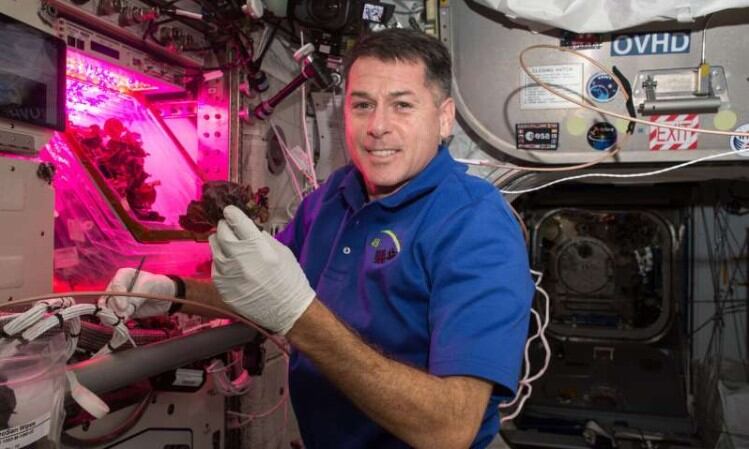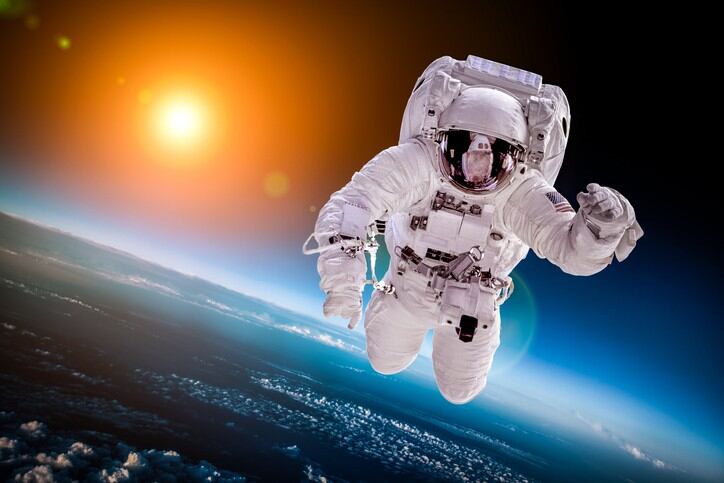A Kennedy Space Center team reports the successful growth of red romaine lettuce in space that results in a crop free of disease-causing microbes and is as nutritious as Earth-grown plants.
“The ability to grow food in a sustainable system that is safe for crew consumption will become critical as NASA moves toward longer missions. Salad-type, leafy greens can be grown and consumed fresh with few resources," says Dr Christina Khodadad, study co-author and researcher at the Kennedy Space Center.
Astronauts rely on processed, pre-packaged rations such as fruits, nuts, chocolate, peanut butter and beef amongst other foods that are sterilised by heating, freeze drying, or irradiation to extend shelf-life.
Ongoing research by the same team indicates that some essential human nutrients like potassium and vitamin K are either deficient in processed and pre-packaged space foods or may degrade to inadequate levels over long duration missions as is the case with vitamins B1 and C.
Several of these nutrients may be supplemented through fresh salad crops and will provide antioxidants and phytochemicals in a natural, whole-food form.
Interstellar lettuce
Along with colleagues from the AECOM Management Services, the team began in 2014, where lettuce was grown on board the ISS from surface-sterilised seeds within Vegetable Production Systems.
These systems are growth chambers complete with LED lighting and a watering system designed to grow crops in space.
The crops grew undisturbed for 33 to 56 days, until crew members ate part of the mature leaves. The remaining crops were deep-frozen until transport back to Earth for chemical and biological analysis.
As a control, the scientists grew plants on Earth under the same temperature, carbon dioxide, and humidity conditions of the ISS, all replicated in the Kennedy Space Center's labs with a 24-48-hour delay.
Results revealed that some space-grown lettuce tended to be richer in elements such as potassium, sodium, phosphorus, sulphur, and zinc, in comparison to the Earth-grown controls.
Space-grown lettuce also tended to have higher levels of anti-inflammatory phenolic molecules with both space- and Earth-grown lettuce achieving similar levels of anthocyanin and antioxidants.
Importantly, none of the bacteria genera detected on the lettuce are known to cause disease in humans with levels of fungal and mould spores within normal range thus fit for human consumption.
More tests confirmed these leaves never carried any dangerous bacteria known to contaminate crops, such as E. coli, Salmonella, and S. aureus.
“Considering the chronological order of the experiments onboard the ISS, this raises the possibility of a change in the ISS water,” the study suggests.
“But that may not be the only variable as plants grown in microgravity experience stresses from environmental conditions, so it would be impractical to draw any conclusions from these differences.
“Similarly, differences in the levels of total phenolics among the samples could be attributed to the environmental conditions with evidence of insufficient and excess water in the root zone.”
Phenolic production
The study references recent research, which shows either insufficient watering or over-watering can lead to hypoxia, which can induce production of phenolic compounds and free-radical scavenging activities.
“Again, there are not enough data to make any conclusions about the effects of the sequential harvesting method on plant ionome or phenolic content and more robust experiments are needed,” the study concludes.
"The International Space Station is serving as a test bed for future long-duration missions, and these types of crop growth tests are helping to expand the suite of candidates that can be effectively grown in microgravity,” says co-author Dr Gioia Massa, project scientist at Kennedy Space Center.
“Future tests will study other types of leafy crops as well as small fruits like pepper and tomatoes, to help provide supplemental fresh produce for the astronaut diet."
Source: Front. Plant Sci.
Published online ahead of print: doi.org/10.3389/fpls.2020.00199
“Microbiological and Nutritional Analysis of Lettuce Crops Grown on the International Space Station.”
Authors: Christina Khodadad et al.


